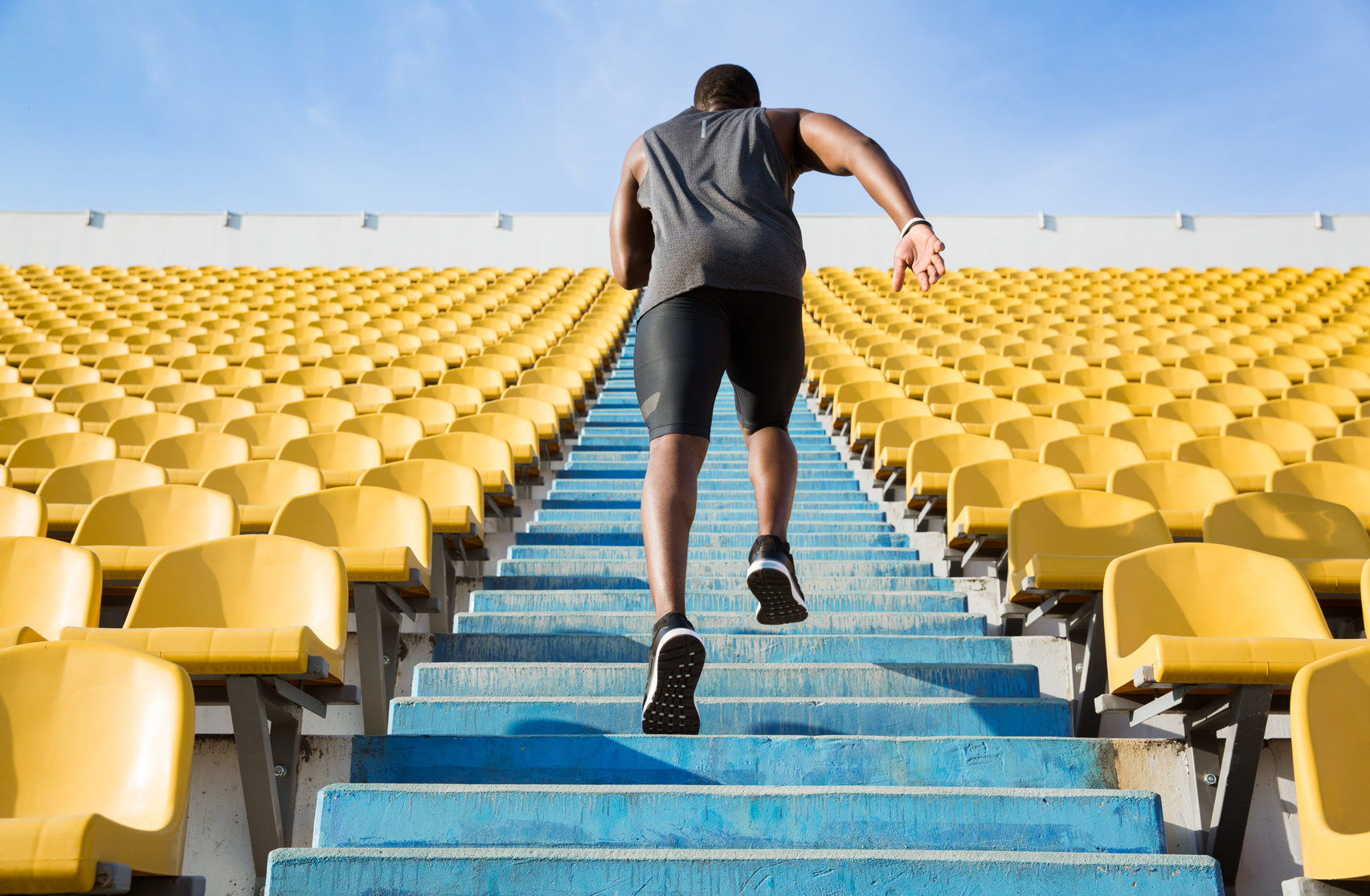If you’re anything like me, then running the same route over and over again can get, really, tedious.
Therefore, spicing up your running program is of paramount importance, especially if you are serious about keeping up for the long haul.
Stadium workout Enters the Picture
Taking your runs into a stadium might be the exact thing you need to spice your workout routines, or even make it more challenging.
Stadium Workout Benefits
You can do so many things in the stadium other than running laps or doing boring crunches.
You can work on all facets of your fitness, from speed, to strength and endurance.
Plus, the stadium also offers an endless option list of workouts to do.
You just need to show up and do them.
No special equipment needed.
The stadium has a lot to offer, from the track, the stairs, the sideline benches to the field, the stadium is really a universal gym in itself.
And as a runner, you should really do your best to make the most out of it.
The best thing about the stadium is the stairs.
Upstairs running recruits more leg muscles—including hamstrings and glutes— than running on flat surface.
In other words, upstairs running is just like hill running, but on steroid.
The Stadium Workout Routine
Here is an interval stadium workout I try do at least once every couple of weeks.
I usually do this workout in the stadium near my apartment, but you can also do it wherever there are bleachers.
Notice, this routine is about more than running.
I also included three bodyweight exercises to the routine to help make things more challenging.
Nonetheless, if you are just in the mood for a cardio workout, then feel free to sprint and run the stairs as much as you like.
Perform the following stadium exercises back to back, with minimum rest between each exercise.
Shoot for at least three to five total rounds, depending on your fitness level of course,
It should take you roughly 15 to 20 minutes to finish the first circuit.
Just make sure to pace yourself and listen to your body the entire time.
Warm Up First For your Stadium Workout
Jumping into a stadium intense workout without a proper warm-up is like flirting with disaster.
As usual, be sure to start your workout with a proper warm –up.
Jog slowly for 5 to 10 minutes to get your blood pumping and heart rate up.
Then, do some dynamic exercises to warm up your body from head to toe.
This will improve your performance as well as prevent premature fatigue and injury later on.
Stadium Exercise 1: High Knees
Run in place as you pull the knees as high as possible toward your chest with each step.
Keep it up for one to two minutes and do it as fast as you can with good form.
Stadium Exercise 2: Sprints
Start at the straightway section of the track, then sprint at full effort for a 100m.
Rest for 30-second, then sprint back to the starting position.
Additional resource – Trx workout for runners
Stadium Exercise 3: Burpees
Assume a hip-width distance apart stance, and place your hands on the ground in front of your feet.
Next, hop your feet back to a full push-up position, perform a push-up, then hop your feet back and explosively jump up the air as high as possible.
Do as many reps as you can in one minute with good form.
Stadium Exercise 4: Stair Sprints
Run up the stairs from section to section as fast as possible while driving your knees up and using your arms to keep momentum.
Next, walk down for recovery.
Stadium Exercise 5: Elevated Pike Pushups
Begin by standing with your back to a bench.
Then assume a downward dog position with hands a bit wider than shoulder-width, placing your feet on the bench behind.
That’s your starting position.
Next, bend your elbows and slowly lower your head until it’s just a couple of inches off the ground, pause for moment, then push back up to starting position.
That’s one rep.
Do AMRAP in one minute then move to the next exercise.
Stadium Exercise 6: Double-step Run
https://www.youtube.com/watch?v=SEdkl9dz_Oo
Sprint up the stairs as fast as you can while striding powerfully to skip a step with each stride.
Stadium Exercise 7: Double-leg Hops
Begin by standing in front of series of steps with feet shoulder-width apart and arms overhead.
Next, drop into mid-squat position, and jump up and forward onto the first step, land softly with your knees slightly bent, then and without delay jump onto the second step and so on, until you reach top of the stairs or until you can do no more.
Turn around and slowly walk back down.
Rest for one to two minutes then repeat the whole circuit for two to three times.
New to Running? Start Here…
If you’re serious about running, getting fit, and staying injury free, then make sure to download my Runners Blueprint Guide!
Inside this guide, you’ll learn how to start running and lose weight weight the easy and painless way. This is, in fact, your ultimate manifesto to becoming a faster and a stronger runner. And you want that, don’t you?
Click HERE to check out my Runners Blueprint System today!
Don’t miss out! My awesome running plan is just one click away.
Conclusion
There you have. This stadium workout routine is a fantastic addition to your workout routine, as long as you choose to perform these stadium exercises on a regular basis. The rest is just detail, as the saying goes.



